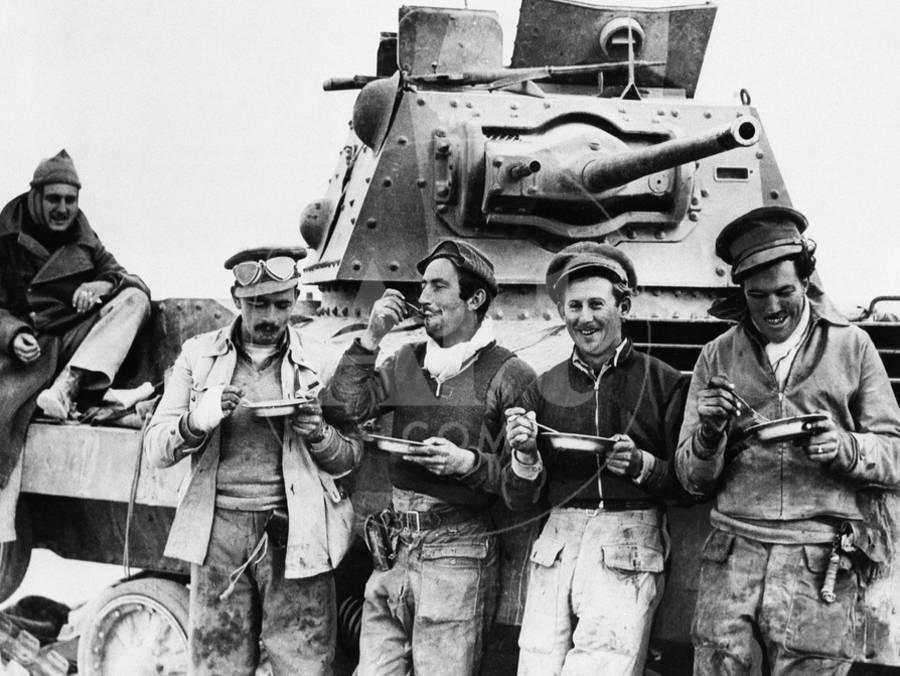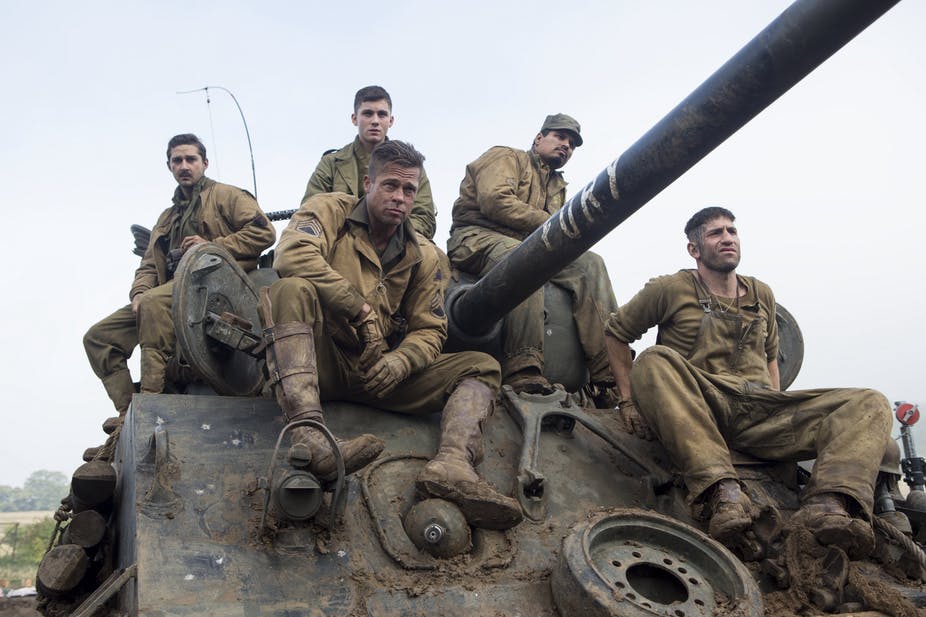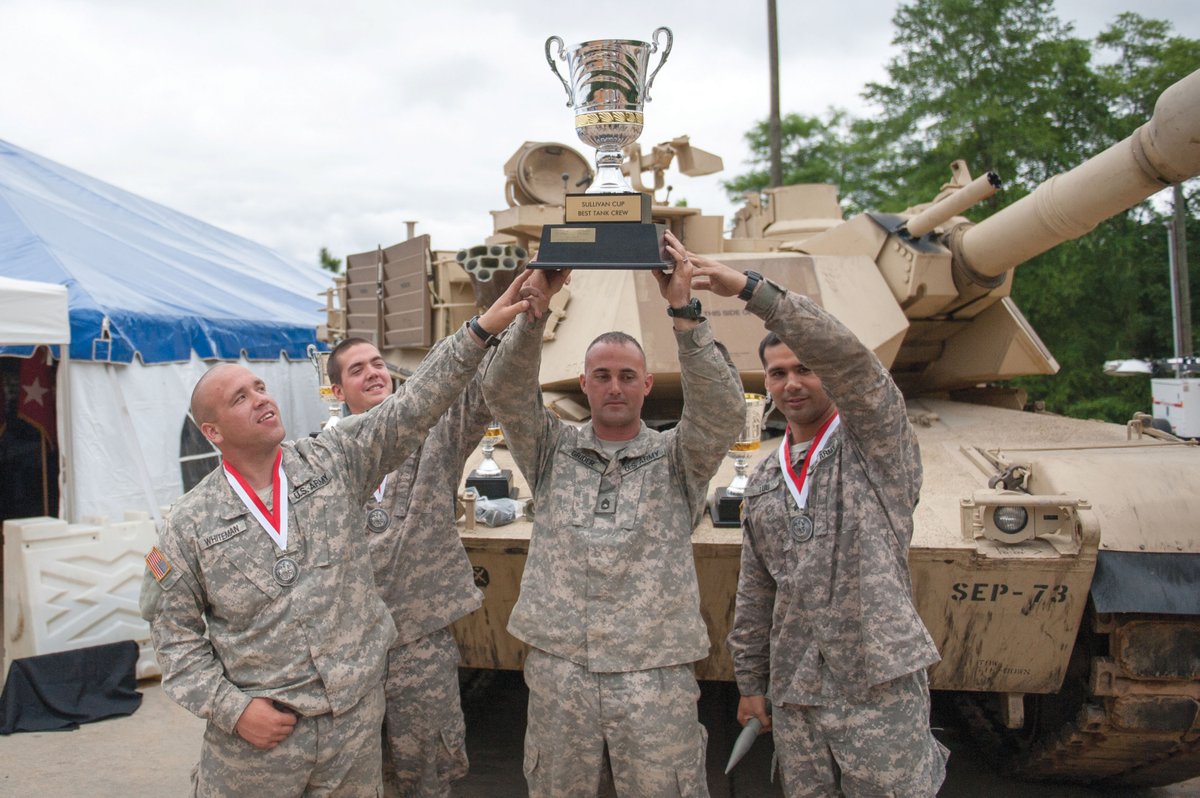
Wanna hear a bit about these guys? Good! Because you're gonna 😂
https://twitter.com/18airbornecorps/status/1341813628228558848
There’s a lot to this history, and we’re actually going to cover it quite a bit in a few weeks so let’s just focus on the 10th Armored Division for a minute because this is an important part of history that’s relevant to the Battle of the Bulge.
The 10th Armored Division was formed as part of our rapidly growing Armored Force during WWII. They were activated on 15 July 1942 at @FortBenning and placed under the command of Major General Paul Newgarden. 



Newgarden was one of Patton’s “disciples” and he modeled the 10th Armored Division in Patton-style, complete with an aggressive motto: “Terrify and Destroy!” 

After a division-wide contest to find a nickname, Newgarden chose “Tiger Division” from the entries. He felt this embodied “soldierly qualities” of being clean and tidy and having the ability to effectively maneuver, surprise, and engage prey. 

The Tiger Division spent most of their first year training. A lot of their equipment initially came from the 2nd Armored Division, another one we’ll talk about in-depth in a few weeks. 



The 10th Armored Division also received an influx of officers from the 3rd Cavalry Regiment and 11th Cavalry Regiment, which were being reorganized a bit at the time. 

After that initial year of gathering equipment and training, the 10th Armored Division demonstrated its capabilities in the Tennessee Maneuvers of 1943. (We'll also be discussing these in a few weeks 🙂) 

Still stateside, MG Newgarden died in an unfortunate plane crash in mid-July 1944, almost on the Tiger Division's 2nd birthday. This hit the Division hard, but they had to stay focused. 

MG William H. H. Morris Jr. took over as the commanding general of the Tiger Division and he encouraged the Tigers to continue their training. At the end of August 1944, the Division was moved to Camp Shanks in New York, where they would prepare to deploy. 

The deployment didn’t start out too smoothly. In mid-September, the 10th Armored Division boarded their ship to head out, but the ship ran aground in the Brooklyn Narrows and over the next day or so everyone on board was shuttled to another vessel via ferry boats.
The second vessel was the S.S. Brazil, a converted luxury liner. On the Brazil, with a destroyer escorting them, the 10th Armored Division set out again to catch up to their convoy, which they met up with a couple days later. static.dvidshub.net/media/pubs/pdf…
And a couple days after that, German U-Boats attacked the convoy, hitting a tanker with torpedoes. The 10th Armored Division made it to Cherbourg, France though. They were the first U.S. armored division to set foot on French soil coming directly from the U.S.
The Tigers were assigned to XX Corps, part of Patton’s Third Army. XX Corps was then commanded by Major General Walton Walker. 

The 10th Armored Division spent about a month getting new equipment and training near Normandy before they would finally get their first taste of combat – at Mars-la-Tours in France in early November 1944.
A couple weeks later, the 10th Armored Division participated in XX Corps’ capture of Metz. This was the first time the Metz fell in 1500 years. 



By 5 December 1944, the Tiger Division had liberated 100 sq.mi. of France, occupied 50 sq.mi. of Germany, captured 2000 prisoners, fought off 11 counterattacks, and destroyed a ton of enemy and enemy materiel.
On 19 November 1944, the 10th Armored Division led the Third Army as they pierced the Siegfried Line into Germany. 

The Allied attack eastward came to a sudden halt when the Germans launched their attack in the Ardennes. The 10th Armored Division was actually the first division to push north against “the Bulge”.
Divided into “Combat Commands” – brigade-sized combined arms units – Combat Command A (CCA) travelled 75 miles in the first day, driving right into an attack. 

CCA assumed responsibility for protecting Luxembourg, Supreme Headquarters Allied Expeditionary Force (SHAEF) where the Generals sat, and Third Army’s right flank. There's an account of that here donmooreswartales.com/2013/04/29/geo…
At this time, the @101stAASLTDIV were resting and refitting in France. And they were immediately sent back to Bastogne, but the 10th Armored Division was the only combat unit defending Bastogne at this time (~17 December 1944).
The Germans were approaching fast and in large numbers. Before dawn on 19 December 1944, the Germans attacked CCB with at least 5 divisions. For reference, a division is made up of brigades, and CCB was roughly the size of a brigade. 

One account tells of a single platoon from CCB, comprised of tank destroyers and infantry armed with bazookas, fighting off a column of German Panzer IV tanks. (I love whenever I get a chance to use this gif 😂)
Portions of the fighting had spilled out into nearby fields, with the 10th Armored Division fighting German Panzers in the snow. But they eventually fell back to the city.
For about 8 hours, CCB fought the attacking German divisions at Bastogne and this kept the Germans preoccupied long enough for the @101stAASLTDIV to get into the city and dig in before they were surrounded.
The Germans moved to encircle Bastogne. The 10th Armored Division elements prepared to fight in all directions. For several days, the Americans endured bombing, artillery barrages, and other fighting in the freezing cold of winter. They watched as supplies and ammunition ran out.
Finally, on 26 December, elements of the 4th Armored Division broke through and were able to help. (More on that in a couple days!)
That wasn’t the end of it for the Tiger Division though! They continued fighting with the @101stAASLTDIV until 18 January 1945.
Interestingly, this was the first time that Combat Commands from a single armored division fought as parts of two separate Corps.
Interestingly, this was the first time that Combat Commands from a single armored division fought as parts of two separate Corps.
“The Tigers distinguished themselves with heroic efforts, both on the southern flank of ‘the Bulge’ and at Bastogne.” benning.army.mil/armor/eARMOR/c…
For their actions from 17 December to 27 December 1944, during the Battle of the Bulge, the @101stAASLTDIV and Combat Command B of the 10th Armored Division, as well as the 21st Tank Battalion, were awarded the Presidential Unit Citation. 

Both the 10th Armored Division and the 101st Airborne Division are honored at monuments and memorials around Bastogne. This turret from a Sherman tank was recovered from a nearby battlefield. 

Sticking this here so I don't lose it, but also for anyone interested in this stuff. 10tharmored.com/images/10thsto… 

@threadreaderapp unroll, please and thank you 🙂
• • •
Missing some Tweet in this thread? You can try to
force a refresh









